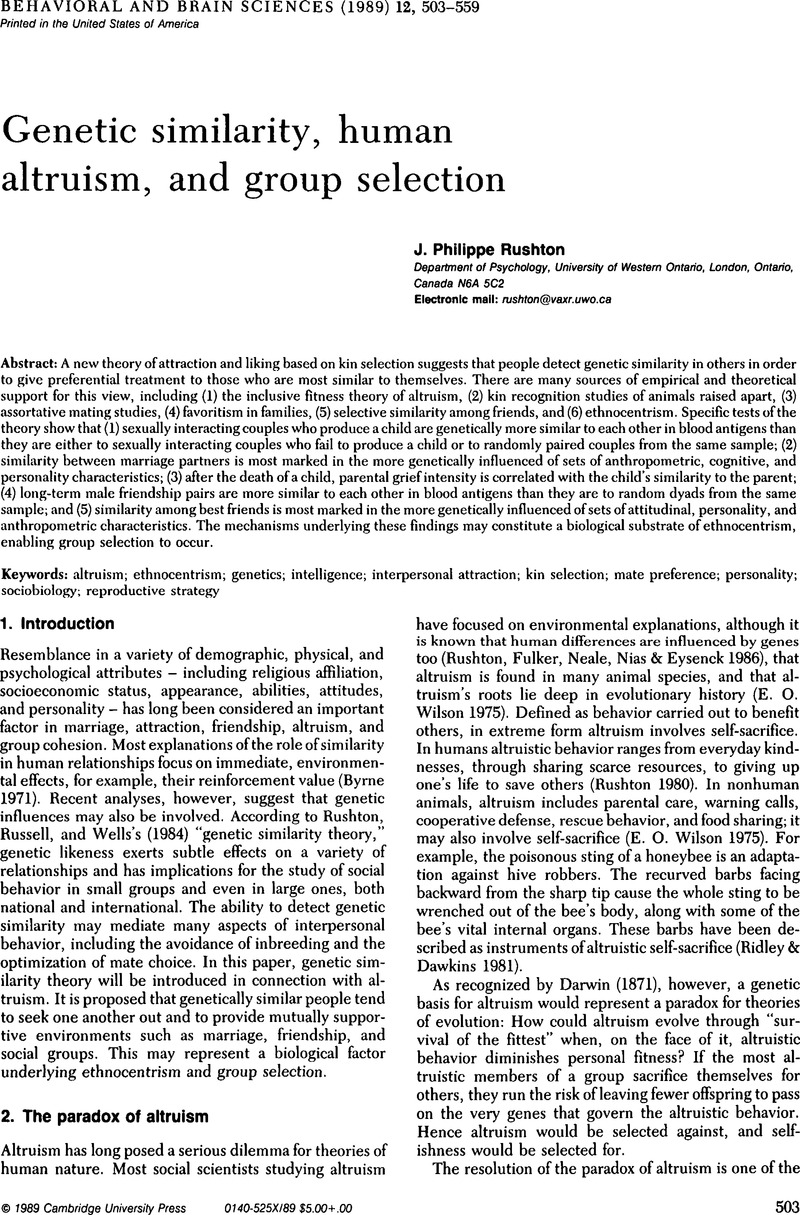Crossref Citations
This article has been cited by the following publications. This list is generated based on data provided by Crossref.
Jaffe, Klaus
1991.
Genetic similarity, human altruism and group selection: A study of the open peer commentaries.
Behavioral and Brain Sciences,
Vol. 14,
Issue. 3,
p.
525.
Rushton, J. Philippe
1991.
Ethnic nepotism in science?.
Behavioral and Brain Sciences,
Vol. 14,
Issue. 3,
p.
526.



